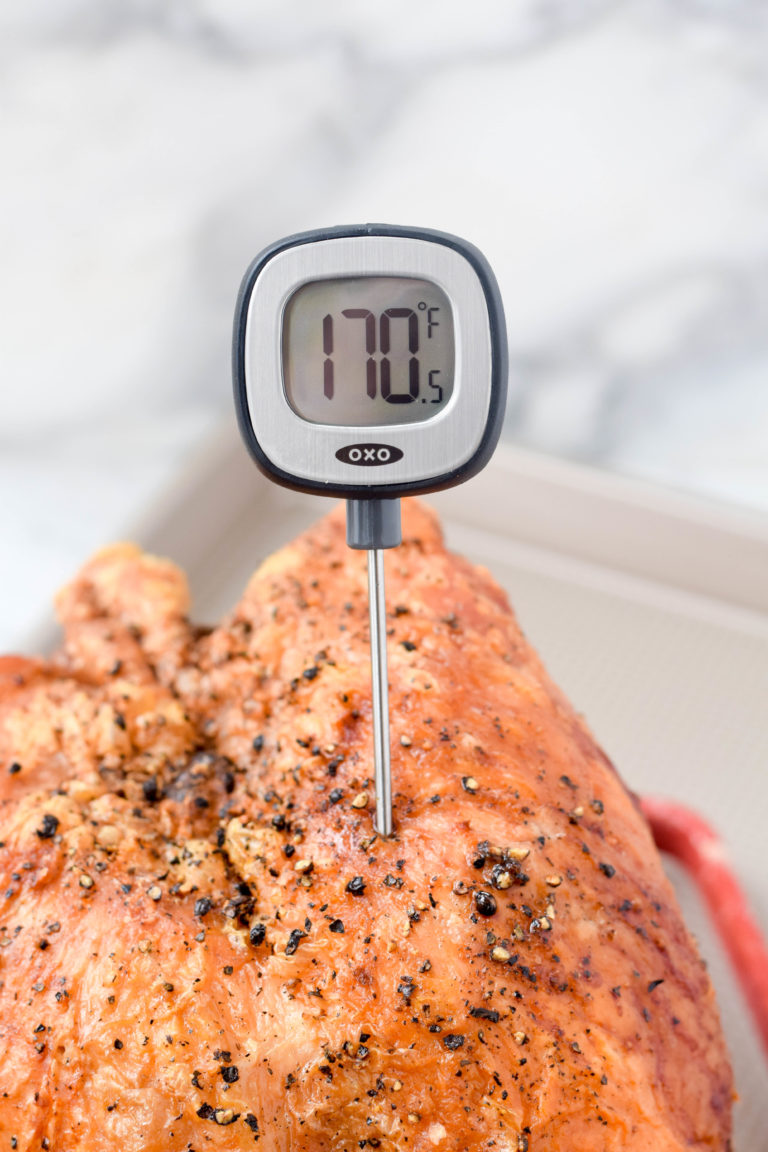
When you cook something, you are essentially killing bacteria in the food. To start with, we need to understand why the internal temperature of a piece of meat should matter. We’ve also included a short FAQ to answer some other food safety questions you might have! How Can Meat Make You Sick? We’re going to be taking you through everything you’ll need to know about cooking turkey safely. If you’re wondering about this – don’t worry! You’ve come to the right place. But how can you know it’s a safe temperature? How can you be sure that your turkey is going to be delicious and nothing else? So let’s say you’ve heard the correct temperature of a cooked turkey breast is 150☏ – this is the one you want to aim for. Arrange on a platter and spoon the delicious juices that have pooled over the top of the meat.At best, eating undercooked turkey can make you sick – at worst, you could end up in hospital – so it’s very important you learn to cook it correctly. Then, lay the breast halves on a cutting board and cut against the grain into slices.
TURKEY BREAST DONE TEMP FREE
Run a knife down the center along the bone to free one breast half. There are two half breasts connected by a center bone.

Carving your Turkey BreastĬarving a turkey breast is no different from carving the breast from a whole chicken. That will help the juices stay in the bird and not rush onto your plate with the first slice of your knife. Cover it loosely with foil and set it in a warm spot until you’re ready to carve. Key for a tender turkey breast is letting it rest a good 20 to 30 minutes after it’s out of the oven. Cooking time will vary depending on the size of the breast, but figure roughly 1 ½ to 2 ½ hours. For me, pulling the turkey breast at 150 degrees is the sweet spot…a bird that is plenty juicy and will reach a safe temperature by the time you serve it. By the time you serve it, it’s probably overcooked. The problem is, the internal temperature continues to rise even after the turkey is out of the oven. Most recipes advise taking turkey breast to a temperature of 165 degrees fahrenheit as recommended by the USDA. Overcooked turkey seems to be an epidemic. The salt flavors and tenderizes the meat and refrigeration dries out the skin, making it extra crispy when roasted. That basically means generously salting the whole thing and leaving it exposed in the fridge for one to three days before it goes into the oven. If you have the time, I recommend you dry brine your turkey before cooking it. My personal preference is a bone-in versus a boneless breast, since that bone imparts flavor and leaves you something with which to make turkey broth the next day. If you stick just with the breast, you avoid that conundrum altogether. Also, when you cook a whole turkey, the legs need to cook longer than the breast, which is why overcooked turkey seems to be the Thanksgiving norm. First off, if you don’t have a crowd big enough to take down a whole bird, the breast is a good bet. Why a Roasted Bone-In Turkey Breast?Įven though I’m a girl who appreciates a turkey leg or thigh, there are some serious upsides to cooking the breast alone. That said, you can make it one notch easier for yourself by skipping the whole bird altogether and just do a roasted bone-in turkey breast. So if you’ve ever cooked a chicken, you’ll be capable of doing a turkey as well. But here’s the thing: a turkey is really just a great big chicken.

The fact that it’s called “The Turkey Talkline” speaks volumes about the seriousness of the matter. Consider the fact that an entire hotline is devoted to turkey.

A lot of anxiety seems to swirl around the task of cooking a turkey.


 0 kommentar(er)
0 kommentar(er)
